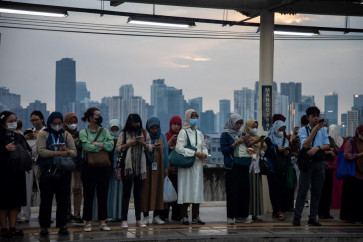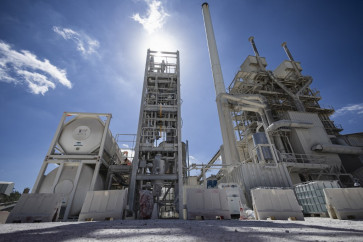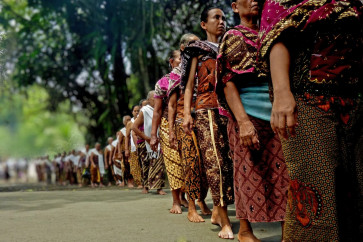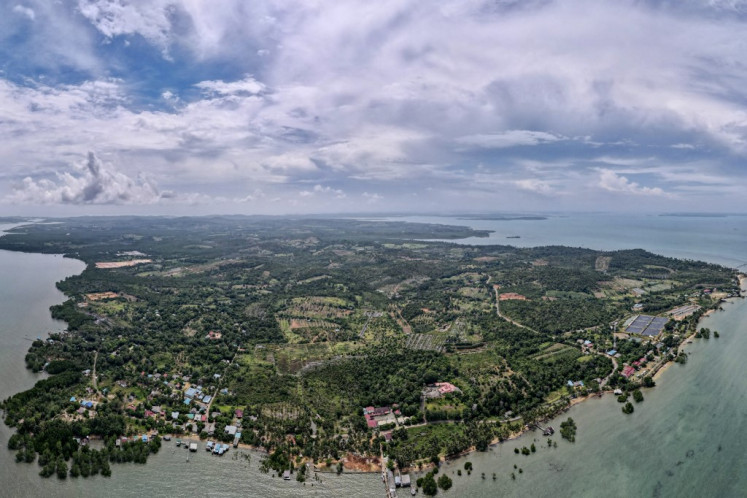Popular Reads
Top Results
Can't find what you're looking for?
View all search resultsPopular Reads
Top Results
Can't find what you're looking for?
View all search resultsTraces of British colonization in Bengkulu
Main gate: Fort Marlborough, as seen through its main gate
Change text size
Gift Premium Articles
to Anyone
Main gate: Fort Marlborough, as seen through its main gate. (JP/Syofiardi Bachyul Jb)
Mighty and undamaged, Fort Marlborough overlooks the port of Bengkulu as its cannon, long since fallen into disuse, points toward the Indian Ocean.
Visitors remain amazed by the pristine, unspoiled and tidy condition of the heritage building, which has survived for almost three centuries.
The fort, covering 44,000 square meters, is said to be the largest built by the British East India Company (EIC) in Southeast Asia.
It's also a monument to the dangers brought on by the rapaciousness of colonialism.
Bengkulu, which was beyond the control of the Acehnese in the early modern era, came under the influence of the sultans of Banten ' a major port in the global pepper trade that eventually fell to Dutch occupiers.
The British, meanwhile, arrived in Bengkulu, which they called Bencoolen, to set up a stronghold in 1685, as their base of operations to extract spice from the archipelago.
Two years later, work was finished on their 30-cannon Fort York, built near the Serut River.
The edifice ' designed to protect the British from local residents, the kingdoms of Aceh and Banten and other colonial powers ' turned out to be a malarial deathtrap.
EIC deputy governor Joseph Collet thus ordered work on a replacement, Fort Marlborough, which was named after the Duke of Marlborough, in 1712.
It was finished five years later.
Tombstone: The marker for the grave of Richard Watts, the deputy governor of the British East India Company who died in Bengkulu. The stone was moved from the malaria-ridden Fort York to Fort Marlborough, where it remains on display.
Little remains of Fort York, which is not a tourist destination. The site currently hosts a primary school, a government office and some private homes.
Fort Marlborough, however, remains magnificent: Its four-sided stronghold has bow-like upper corners where cannons were installed.
A copy of the original designs of Fort Marlborough from 1712 remains on display. Little has changed since its construction, except the addition of a park inside the battlements.
Its main gate, located to the south, is triangular, featuring a thick wooden door accessed by 13-meter-long drawbridge that spans the moat surrounding the fort.
Inside are guard rooms and prison cells featuring barred windows and graffiti scribbled in Dutch by men thought to have been imprisoned there during the Japanese occupation.
A red-brick floor leads to an armory. In the back are EIC offices and a gunpowder magazine. More barred rooms lie to the right.
One features the words Ruang Interogasi Soekarno, or Sukarno's interrogation room. It dates from when the future president was exiled to the island by the Dutch.
Ready, aim'¦: A cannon is pointed at the Indian Ocean at Fort Marlborough in Bengkulu.
There are also several memorials to the British killed by local residents angered over colonial exploitation. One commemorates the deaths of Thomas Parr and Charles Murray, the 'resident' (or chief official) and his assistant, in 1807.
Another monument, closer to Panjang Beach, commemorates Robert Hamilton, a British officer killed by those who lived on the island in 1793.
About a hundred meters from the Parr monument is the Bengkulu governor's office, which was used by Sir Thomas Stamford Raffles when he was the island's colonial ruler.
It's a typical European mansion marked by a spacious lawn and frolicking deer.
The British Cemetery, less than a kilometer east of the fort, hosts the graves of British, Dutch and other Europeans who died in Bengkulu between 1775 and 1940 ' including Raffles' four children with his second wife, Sophia Hull.
Nearby in Chinatown are the remnants of the EIC salt warehouses. Only their thick tall walls remain.
Eventually, Britain ceded Bengkulu to the Dutch in exchange for Singapore in 1824, ending the nation's 137-year colonization of the island.
Raffles' legacy, however, remains. A Sumatran flower introduced to the island bears his name and is now part of the provincial seal.
So too does the legacy of British colonialism: Remembrance of the sepoy, or soldiers, sent from India to Bengkulu by the British has given birth to the annual Tabot ceremony, reflecting their Shia Islam faith.













